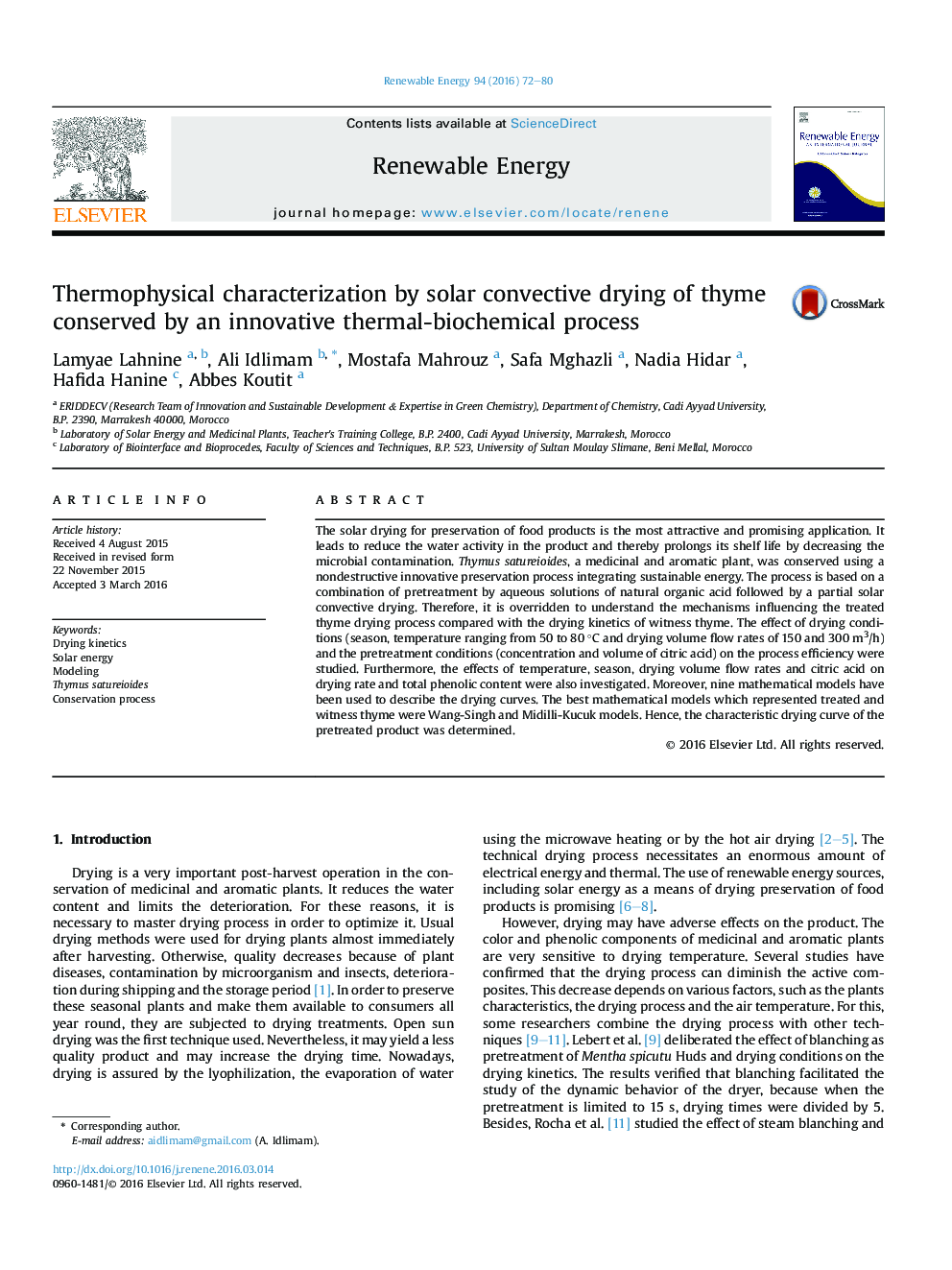| Article ID | Journal | Published Year | Pages | File Type |
|---|---|---|---|---|
| 6765755 | Renewable Energy | 2016 | 9 Pages |
Abstract
The solar drying for preservation of food products is the most attractive and promising application. It leads to reduce the water activity in the product and thereby prolongs its shelf life by decreasing the microbial contamination. Thymus satureioides, a medicinal and aromatic plant, was conserved using a nondestructive innovative preservation process integrating sustainable energy. The process is based on a combination of pretreatment by aqueous solutions of natural organic acid followed by a partial solar convective drying. Therefore, it is overridden to understand the mechanisms influencing the treated thyme drying process compared with the drying kinetics of witness thyme. The effect of drying conditions (season, temperature ranging from 50 to 80 °C and drying volume flow rates of 150 and 300 m3/h) and the pretreatment conditions (concentration and volume of citric acid) on the process efficiency were studied. Furthermore, the effects of temperature, season, drying volume flow rates and citric acid on drying rate and total phenolic content were also investigated. Moreover, nine mathematical models have been used to describe the drying curves. The best mathematical models which represented treated and witness thyme were Wang-Singh and Midilli-Kucuk models. Hence, the characteristic drying curve of the pretreated product was determined.
Keywords
Related Topics
Physical Sciences and Engineering
Energy
Renewable Energy, Sustainability and the Environment
Authors
Lamyae Lahnine, Ali Idlimam, Mostafa Mahrouz Mostafa Mahrouz, Safa Mghazli, Nadia Hidar, Hafida Hanine, Abbes Koutit,
